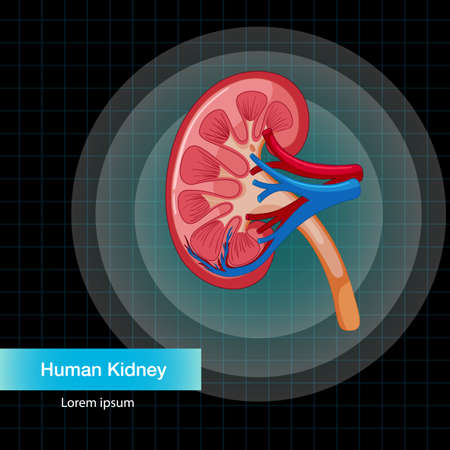1. Understanding the Role of Food in American Culture
Food is more than just nutrition in American culture—it’s a way for families and communities to connect, celebrate, and remember their heritage. Traditional American meals are deeply influenced by history, geography, and family traditions. From Southern fried chicken to New England clam chowder, every region has its own favorites that reflect local ingredients and customs.
How History Shapes Food Choices
American food culture has roots in many different countries, with each wave of immigrants bringing new flavors and cooking styles. Over time, these influences blended together, creating dishes that are now seen as “all-American.” For example, pizza and hamburgers have European origins but have become staples across the U.S.
Regional Favorites Across the United States
| Region | Popular Traditional Foods | Cultural Influences |
|---|---|---|
| The South | Fried chicken, collard greens, cornbread | African, Native American, European |
| Northeast | Clam chowder, lobster rolls, baked beans | British, Irish, Indigenous peoples |
| Midwest | Casseroles, pot roast, corn on the cob | German, Scandinavian, Polish |
| West Coast | Tacos, sushi rolls, sourdough bread | Mexican, Asian, Gold Rush settlers |
| Southeast (Creole/Cajun) | Gumbo, jambalaya, beignets | French, Spanish, African-American |
The Importance of Family Traditions
Family gatherings often center around food—think Thanksgiving turkey or summer barbecues. These meals aren’t just about eating; they’re about passing down recipes and stories from one generation to the next. For many Americans, food traditions create a sense of belonging and identity.
2. Common Dietary Challenges in Cardiac and Pulmonary Health
Understanding Typical Issues in American Diets
The traditional American diet is rich in flavors but can also be high in ingredients that may not support heart and lung health. Many classic dishes rely on processed foods, lots of salt, and saturated fats. These elements are tasty but can put extra strain on the cardiovascular and respiratory systems over time.
High Sodium Intake
Sodium is a common ingredient in many favorite American foods, from burgers and fries to canned soups and deli meats. Eating too much sodium can raise blood pressure, making it harder for the heart and lungs to function well. Americans often eat more than the recommended daily amount of sodium, mostly because of hidden salt in packaged and restaurant foods.
Sources of High Sodium Foods
| Food Category | Common Examples | Why Its a Concern |
|---|---|---|
| Fast Food | Burgers, fries, chicken nuggets | Often heavily salted during cooking and processing |
| Processed Meats | Bacon, hot dogs, deli turkey/ham | Cured or preserved with salt for flavor and shelf life |
| Canned & Packaged Foods | Soups, vegetables, frozen dinners | Salt added for preservation and taste enhancement |
| Snacks | Chips, pretzels, salted nuts | Salt used to boost flavor appeal |
Saturated Fat Consumption
Saturated fats are found in animal products like butter, cheese, red meat, as well as some baked goods. Consuming too much saturated fat can raise cholesterol levels, increasing the risk of heart disease. Popular comfort foods such as mac and cheese or fried chicken are common sources.
Saturated Fat in Traditional Dishes
| Popular Dish | Main Ingredients with Saturated Fat | Healthier Swap Ideas |
|---|---|---|
| Cheeseburger | Ground beef, cheese, mayo-based sauces | Lean turkey burger, low-fat cheese, yogurt-based sauce |
| Fried Chicken | Breaded skin-on chicken deep-fried in oil | Baked or air-fried skinless chicken breast with light breading |
| Macaroni & Cheese | Whole milk, butter, full-fat cheese | Low-fat milk, reduced-fat cheese, whole grain pasta options |
| Pizza (meat lovers) | Pepperoni, sausage, extra cheese toppings | Lighter toppings like grilled veggies or lean chicken; thin crusts; less cheese |
Cultural Preferences for Cooking Methods
A big part of American food culture is the love for grilling, frying, and barbecuing. While these methods add flavor and tradition to meals, they often require more oils or fats and can sometimes lead to higher calorie intake. Deep frying especially increases both fat content and calorie count.
Popular Cooking Methods & Their Impact
| Cooking Method | Description | Potential Health Impact |
|---|---|---|
| Deep Frying | Dipping food into hot oil until crispy | Adds saturated fat and calories; may increase cholesterol |
| Grilling/Barbecuing | Cooking over direct flame or coals | Adds smoky flavor; can lead to higher fat if fatty cuts are used |
| Baking/Roasting | Cooks food using dry oven heat | Tends to use less oil; healthier option if minimal butter/fat is used |
Understanding these challenges is the first step toward adapting traditional American meals for better heart and lung health while still honoring favorite flavors and cooking traditions.
![]()
3. Modifying Classic American Dishes for Better Health
Making Traditional Favorites Heart- and Lung-Friendly
Many classic American dishes—like burgers, casseroles, and barbecue—hold a special place in our hearts and on our tables. However, some traditional recipes can be high in saturated fat, sodium, or added sugars, which may not be ideal for cardiac and pulmonary health. The good news is that you don’t have to give up your favorite flavors. With a few thoughtful changes, these beloved meals can become healthier while staying true to their roots.
Burgers: Swapping Ingredients, Keeping the Taste
Burgers are an all-American staple. To make them more heart- and lung-friendly, try these swaps:
| Traditional Ingredient | Healthier Swap | Why It Works |
|---|---|---|
| Ground beef (80/20) | Lean ground turkey or plant-based patty | Reduces saturated fat but keeps juicy texture |
| White bun | Whole wheat bun or lettuce wrap | Adds fiber for heart health |
| Cheddar cheese slice | Sliced avocado or low-fat cheese | Creamy flavor with less saturated fat |
| Mayonnaise-heavy sauces | Greek yogurt-based spread or mustard | Lowers calories and adds tangy taste |
| French fries side | Baked sweet potato fries or veggie sticks | More nutrients, less unhealthy fat |
Casseroles: Comfort Food with a Healthy Twist
Casseroles are loved for their convenience and comfort. Here’s how to adapt them:
- Sodium Smart: Use no-salt-added broths and rinse canned vegetables before adding them to your dish.
- Add More Veggies: Double the amount of vegetables like spinach, carrots, or bell peppers for extra fiber and vitamins.
- Lighter Creaminess: Substitute full-fat cream soups with pureed cauliflower or low-fat Greek yogurt for a creamy base.
- Whole Grains: Replace white rice or pasta with brown rice, quinoa, or whole grain pasta to boost fiber and help control blood pressure.
Barbecue: Enjoying Flavor Without the Extra Salt & Fat
Barbecue is all about bold flavors and community gatherings. You can keep the tradition alive with these tips:
- Select Lean Proteins: Choose chicken breast, turkey sausages, or fish instead of fattier cuts like brisket or ribs.
- Ditch the Sugar-Laden Sauces: Make your own BBQ sauce using tomato paste, vinegar, spices, and just a touch of honey.
- Add Colorful Sides: Serve grilled corn on the cob (without butter), bean salads, or slaw made with olive oil instead of mayo.
- Grill Veggies Too: Add skewers of mushrooms, zucchini, bell peppers, and onions for smoky flavor without extra calories.
Quick Tips for Keeping Familiar Flavors Alive
- Use Spices Generously: Garlic powder, paprika, black pepper, cumin, and herbs add plenty of taste without extra salt.
- Create “Umami” Flavors: Mushrooms and tomatoes can mimic savory richness often found in traditional meats.
- Savor Texture: Roasting or grilling foods brings out natural sweetness and crispness that many people love.
- Taste-Test Together: Involve family members in trying new versions of old favorites—this helps everyone feel connected to the meal.
No matter which dish you’re adapting, remember: small changes add up over time. By making mindful ingredient swaps and celebrating familiar flavors in creative ways, you can enjoy the best of American cuisine while supporting both heart and lung health.
4. Promoting Acceptance and Enjoyment of Healthier Recipes
Making Healthy Changes Feel Familiar
When adapting traditional American foods for cardiac and pulmonary health, its important to help patients and families enjoy these new recipes. People are more likely to stick with healthy changes if the food tastes good and still feels familiar. Here are some easy ways to introduce healthier versions of classic dishes while respecting personal tastes and cultural traditions.
Practical Tips for Introducing Modified Recipes
Start Small with Simple Swaps
Try making just one or two changes at a time so the flavors aren’t too different all at once. For example, you can use herbs instead of salt, or swap out sour cream for Greek yogurt in dips.
Invite Family Input
Ask family members about their favorite foods and flavors. Involve them in the cooking process—kids especially love helping in the kitchen! This makes everyone feel included and more open to trying new recipes.
Honor Regional Favorites
If your family loves Southern fried chicken or New England clam chowder, look for heart-healthy ways to prepare these meals. Oven-baking, air frying, or using low-sodium broths are great options.
Respecting Taste Preferences and Cultural Identities
Everyone’s palate is different, and food is deeply connected to culture. Let’s explore how to make popular American dishes both healthy and tasty, while still honoring cultural roots:
| Traditional Dish | Common Ingredients | Healthier Modifications | Cultural Respect Tips |
|---|---|---|---|
| Macaroni & Cheese | Pasta, cheese, butter, milk | Use whole-wheat pasta, low-fat cheese, add pureed veggies like cauliflower for creaminess | Keep signature creamy texture and cheesy flavor by using spices like paprika or garlic powder |
| Burgers & Fries | Beef patties, white buns, fries fried in oil | Try lean ground turkey or plant-based patties, whole-grain buns, oven-baked sweet potato fries | Add traditional toppings (lettuce, tomato) and favorite condiments (just use less salt) |
| Soul Food Collard Greens | Pork fat seasoning, collard greens | Sauté with smoked turkey instead of pork; use olive oil sparingly | Keep original spices like red pepper flakes and vinegar for authentic taste |
| Clam Chowder (New England) | Cream, potatoes, clams, bacon | Use low-fat milk or plant-based milk; skip bacon or use turkey bacon; add more veggies | Serve with whole-grain crackers to keep familiar experience |
| Tacos (Tex-Mex) | Ground beef, flour tortillas, cheese, sour cream | Use ground chicken or beans; try corn tortillas; top with avocado and salsa instead of sour cream | Let each person build their own taco to suit taste preferences |
Create Positive Mealtime Experiences
- Praise Efforts: Celebrate when someone tries a new healthy recipe—even small steps count!
- Cook Together: Preparing food as a family builds excitement and helps everyone learn new habits together.
- Taste Test Parties: Make trying new foods fun. Hold a “taste test” night where everyone samples different versions and votes on favorites.
The Bottom Line: Make It Personal!
The best way to promote acceptance is to match recipes with what your family already loves. Adjust flavors gradually and always listen to feedback. Remember—small changes can make a big difference for heart and lung health without losing the joy of eating together.
5. Community Resources and Support Systems
Many Americans want to eat healthier, but making changes can feel overwhelming—especially when adapting traditional favorites for heart and lung health. Luckily, there are plenty of community resources, educational programs, and support networks designed to help people make smart food choices that fit their culture and lifestyle.
Community Programs for Healthy Eating
Across the United States, you’ll find local organizations offering classes, workshops, and even meal planning help focused on cardiac and pulmonary health. These programs often partner with community centers, hospitals, churches, or schools to make learning accessible and friendly. Some even offer cooking demonstrations using familiar American dishes prepared in healthier ways.
| Resource Type | Description | Where to Find |
|---|---|---|
| Cooking Classes | Hands-on lessons showing how to cook traditional foods with less salt, fat, and sugar. | Community centers, YMCAs, hospital outreach programs |
| Nutrition Workshops | Interactive sessions about reading labels, portion control, and choosing heart-healthy ingredients. | Public libraries, health fairs, senior centers |
| Support Groups | Peeer support for those managing heart or lung conditions; share recipes and tips. | Local hospitals, online forums, faith-based groups |
| Food Assistance Programs | Access to fresh produce and healthy foods at low or no cost. | Food banks, SNAP/EBT programs, farmers’ markets with Double Up Food Bucks |
Culturally Tailored Nutrition Education
Nutritional advice works best when it respects people’s cultural backgrounds. Many American communities now offer nutrition education tailored for different traditions—like Southern comfort food, Tex-Mex favorites, or classic Midwest casseroles. These programs show how to tweak beloved recipes so they’re lower in sodium or saturated fat but still taste like home. For example:
- Soul Food Makeovers: Using smoked turkey instead of ham hocks for greens.
- Slimmed Down BBQ: Baking chicken instead of frying and using dry rubs instead of sugary sauces.
- Lighter Creamy Dishes: Swapping heavy cream for Greek yogurt in dips or casseroles.
Support Networks That Make a Difference
No one has to go through these changes alone. Support from family members, friends, or others facing similar health challenges makes a big difference. Look for:
- Faith-based Health Ministries: Many churches run “health Sundays” or weekly groups focused on wellness and cooking healthy meals together.
- Online Communities: Social media groups like the American Heart Association’s Facebook community where members share tips and encouragement.
- Bilingual Outreach: Programs offering materials and classes in Spanish or other languages common in your area.
Your Next Steps: Getting Connected Locally
If you’re interested in adapting your favorite foods for cardiac and pulmonary health, start by checking out what’s available in your neighborhood. Ask your doctor or local health department about recommended programs. Connecting with these resources can make healthy eating feel more doable—and even fun—while keeping American traditions alive at the table.


